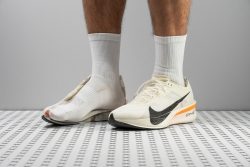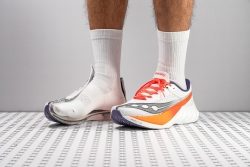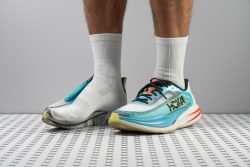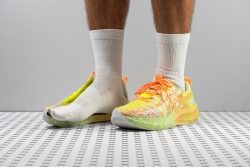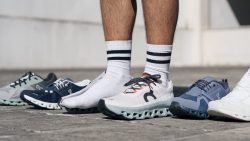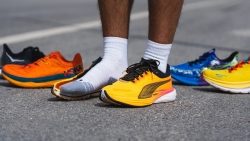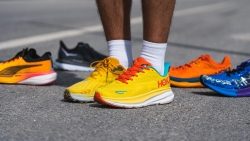7 Best Running Shoes For 5K And 10K Races in 2025

We buy shoes ourselves. We earn commissions when you buy through us, at no extra cost. Why trust us
You did the work: you logged the miles, you trained hard, and now you want a shoe that will support you in your 5K or 10K efforts. You're just in the right place. We have personally bought and tested all the shoes here and picked them as best based on our wear tests and lab tests.
What can you live without at shorter distances, and what should you always look for in running shoes for 5K/10K? We cover that as well in our guide section. Check out our top picks in different categories, and we hope you smash your PB!
How we test Running shoes for 5K and 10K races
Here at RunRepeat, we publish objective shoe reviews. After carefully reviewing the shoes, we select a few that are the best in different categories. To fully understand our behind-the-scene process, read how we do it:
- We buy all the 5K/10K shoes with our own money. We don't have contracts with running shoe brands, or anyone for that matter. We get to say what we experienced and tested and be 100% honest about it.
- We put the shoes on and test them on the roads, track, and even gravel when needed. We make sure to test them at all paces so we can elaborate on how they feel for slower and faster runners.
- We take the shoes to our lab, where we cut them in half and subject them to 20+ different tests. This allows us to quantify, rank, and compare running shoes based on their energy return, shock absorption, breathability, flexibility, heel counter stiffness, traction, outsole durability, and other features you might care about when looking for a new race shoe.
Best running shoes for 5K and 10K overall





















































What makes it the best?
The Nike Vaporfly 4 takes it up a notch with its perfect mix of comfort, speed, and weightlessness. It's our top choice for 5K and 10K running because of its responsive cushioning and powerhouse nature. Our feet and lab results can't deny that this shoe is designed for winning.
Running flat out is a tough feat, yet Vaporfly 4 makes it more bearable and enjoyable with its bouncy platform. Its near-average 34.1/25.5 mm stack allows any footstriker to tackle the miles comfortably. The ZoomX midsole feels springy and soft, ensuring boundless energy without bottoming out. Upon checking with our durometer, it's 5.2% softer than average.
Our bend test reveals the FlyPlate's impressive stiffness, which is 14.6% above average, enhancing speed with minimal effort. This is the figure we’re looking for to smash PBs. We can’t help but notice how V4 sustains our power effectively.
V4’s low weight and breathable upper further enhance the running experience. At a mere 5.9 oz (166g), it’s much lighter than the average supershoe (7.3 oz/208g). Its weightlessness is augmented by its exceptional airflow, demonstrated by its 4/5 score in our smoke test.
Such a high-performance shoe comes with a hefty price tag of $260. It’s worth the investment, but runners on a budget should look elsewhere.
Pros
- 13% lighter than the Vaporfly 3
- Awesome for 5K, 10K and 21K races
- Full ZoomX midsole
- Spring-loaded carbon-fiber Flyplate
- Fantastic lockdown with premium laces
- Moderate rocker for a more natural ride
- Improved perforated, removable insole
- Better rubber coverage in the forefoot
- Gets improvements from the Alphafly 3
- Great upper featuring breathability and durability
Cons
- Less ideal for marathon racing
- Still lacks the snappy feel of the Vaporfly 1&2
- Narrow midfoot and heel limit stability
Running shoes for 5K and 10K with the best energy return




























































What makes it the best?
Our runs tell us the Adidas Adizero Adios Pro 4 has the best energy return for 5K and 10K running because of its massive yield without the rigidity often associated with racers. Our lab confirms its responsiveness and also reveals its focus on weight savings, which we truly enjoyed at faster paces.
Each stride we made forward was full of vigor and power through AP4’s dynamic midsole. We tested the foam’s energy return and recorded lab-crushing scores of 80.4% and 80.3% in the heel and forefoot, respectively. For reference, the average is only 58.3% and 60.5%, which is why the extra push feels undeniable with every stride.
We sliced the AP4 in half and discovered Energy Rods 2.0, which mimic our foot bones. Despite having carbon-infused rods, AP4 emerged only 51.3% stiffer than the average running shoe. Carbon-plated shoes tend to be much more rigid, highlighting AP4’s comfort and more flexible feel while delivering superb performance.
Its lightweight design creates an effortless running experience, making it easier to pick up the pace and go full throttle. Our scales confirmed that it’s only 7.1 oz (200g), much lighter than the average 9.3 oz (265g) running shoe.
However, the heel runs extremely narrow and will feel too tight or unstable for rear strikers. This racer suits forefoot and midfoot strikers best.
Pros
- Softer, bouncier Lightstrike Pro foam
- Maintains the same price
- No more heel slippage
- Versatile from 5K to marathon distances
- Durable outsole with outstanding grip
- Fantastic for midfoot and forefoot strikers
- Improved for faster runners
- Comfortable, gusseted tongue
- Lighter than Adios Pro 3
Cons
- Unstable for every heel striker
- Narrow, tapered toebox
- Upper lacks breathability
- Midsole loses bounce quicker than AP3
Best running flats for 5K and 10K























































What makes it the best?
The Nike Streakfly 2 proved to be quicker than a flash in our runs. Utterly lightweight and agile, we tackled short distances effortlessly with the help of its plush and electric midsole, as proven by our lab. Offering a fast and raw feel, it’s like a track spike designed for the roads with its low drop, making it our best flat 5K and 10K running shoe.
With only 27.0/23.3 mm of cushioning between our feet and the ground, we had a connected and intuitive underfoot sensation. It features a low 3.7 mm drop, built for forefoot strikers who enjoy raw and fast-reacting speed. The midsole features two foams with a Flyplate in between, with the top layer measuring a soft 16.4 HA and offering otherworldly responsiveness.
The shoe literally melts away on foot, blowing our minds with only a 4.5 oz (128g) figure on the scale, the lightest we’ve ever encountered in the lab! This airy build makes it exceptionally easy to maneuver. Our bend test confirms it's 55.1% more flexible than average.
Even during the hottest days, our body heat and sweat could escape seamlessly through the upper. Our smoke test proves this observation with a perfect breathability score.
However, the shoe's ultra-narrow dimensions in the midsole and toebox may restrict its target audience. With one of the lowest-volume uppers, we can’t recommend Streakfly 2 to those with broad feet or pointy toes.
Pros
- Feather-light build
- Ideal for 5K/10K races
- Wild, fun and fast
- Now features a carbon-fiber plate
- Much quicker than its predecessor
- Top-tier ZoomX foam
- Perfect for track workouts
- Not pricey all things considered
- Can stretch up to half marathon
- Grips well on dry and wet roads
Cons
- Not for heel strikers
- Only for short distances
- Narrow toebox
- Lacks stability
Best running shoes for 5K and 10K for heel strikers
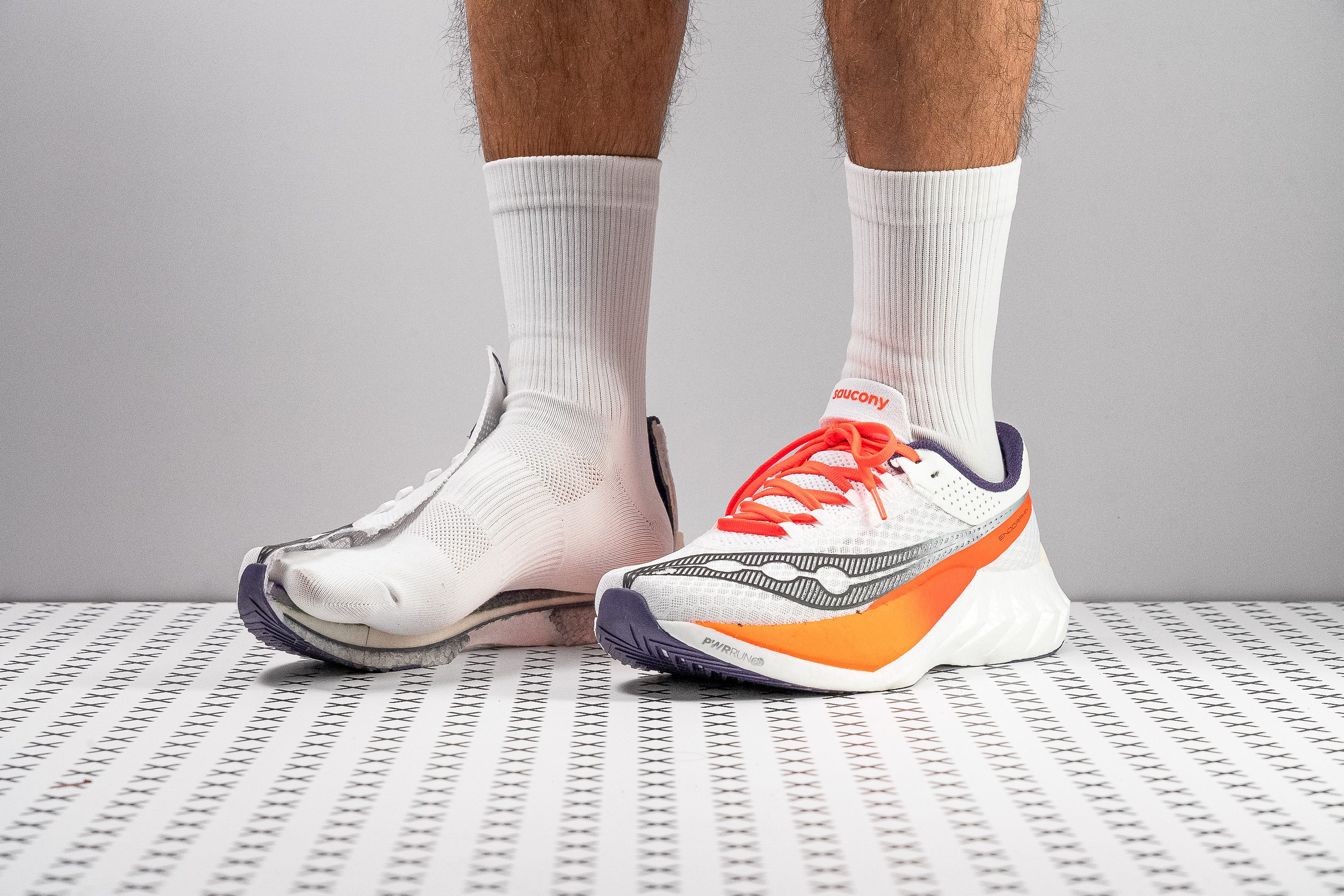
























































What makes it the best?
We tested countless running shoes for 5K and 10K distances and found the Saucony Endorphin Pro 4 as the heel-striker’s best friend. Through its light weight and Speedroll technology, EP4 seamlessly generates powerful strides complemented with a dynamic midsole that’s both comfortable and supportive. Our lab confirms it's an effortless performer.
Our sliced midsole reveals a heel stack of 38.1 mm that ensures a gentle and low-impact ride. Paired with a modest forefoot, the drop is a steep 9.5 mm that facilitates smoother transitions for rear strikers. We also discovered dual-density layers which translates to a forgiving yet responsive ride: the top is a plush 18.5 HA for comfort, while the base is a firmer 22.0 HA to enhance surefooted landings.
Nestled in between the two foams is an ultra-stiff S-shaped carbon plate that emerged 140.8% more rigid than average. Featuring the Speedroll technology, this translated to silky smooth strides and massive energy return in our runs.
Despite all the cushioning, EP4 surprises us with a low 7.8 oz (220g) figure on the scale, 17.0% lighter than average! However, other elite supershoes may still feel lighter and quicker. Those chasing PBs by mere seconds can explore other options.
Pros
- Durable upper and outsole
- Spacious upper fit
- Enhanced midsole comfort
- Great value at $225 for a supershoe
- Versatile across all paces
- Ideal for heel strikers
- More stable than ever
Cons
- Slightly heavier than v3
- Less suited for forefoot strikers
- Competitors may feel quicker
Running shoes for 5K and 10K with the best shock absorption
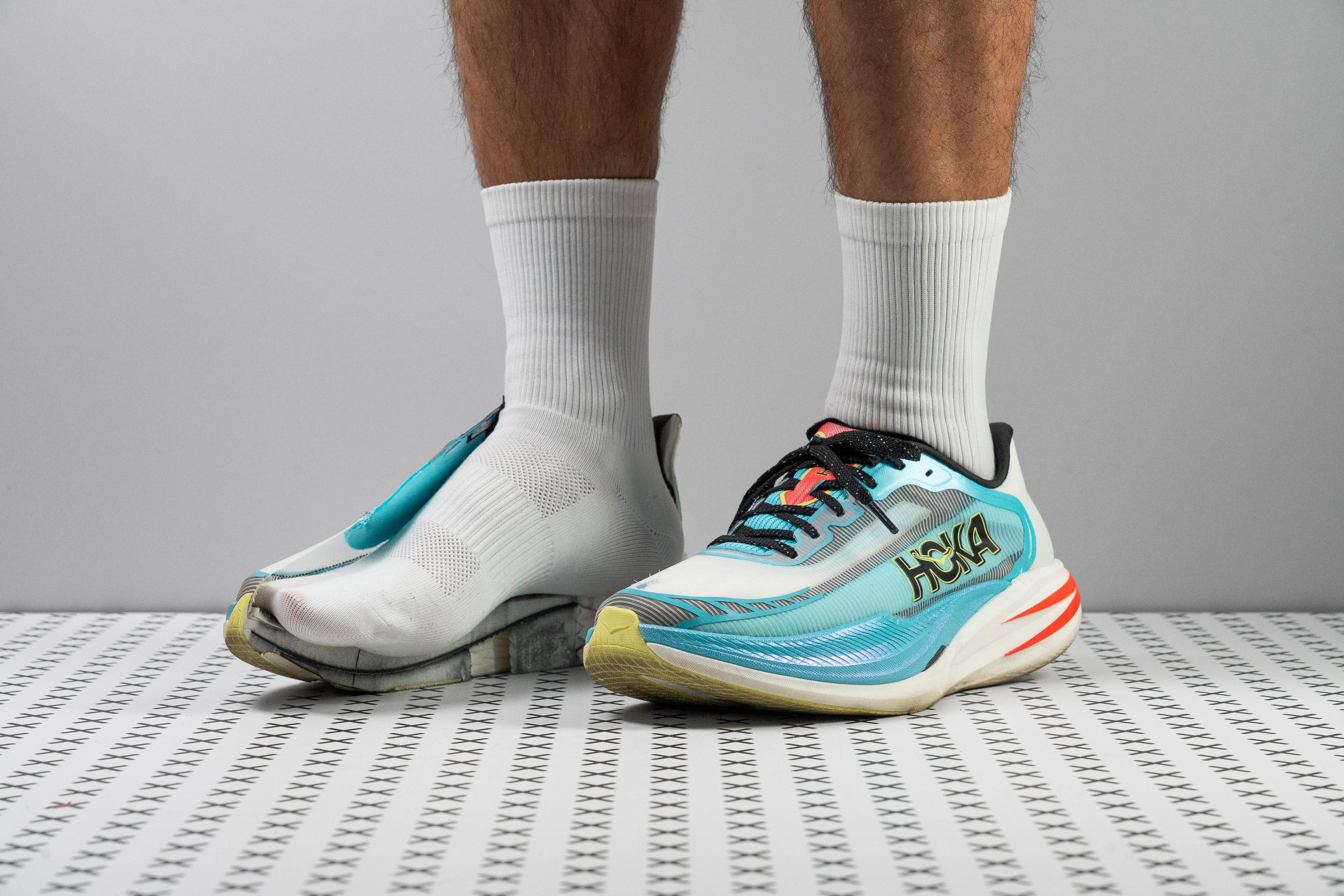

















































What makes it the best?
The Hoka Cielo X1 2.0 proves that combining superior cushioning with massive energy rebound in a lightweight package is possible! And it does so in the best way, as our feet couldn’t deny its gentle landings and springy takeoffs during our runs. Out of all the results we got in the lab, this shoe stands out with the best shock absorption among 5K and 10K running shoes.
Cielo X1 2.0’s comfort-loaded sensation comes from its generous 38.8/28.1 mm stack. Plus, it’s not the ordinary cushioning because it received high levels of shock absorption in our lab test: with 160 SA in the heel and 108 SA in the forefoot. Both figures lie above average, meaning they’re able to reduce stress on our joints more.
5K and 10K running demands speed, and this shoe can definitely deliver! Testing for its energy return, we were in awe of its 75.9% score in the heel and its even greater 78.4% rate in the forefoot. The shoe also features a bold curvature that makes forward strides feel easier.
Surprisingly, this cushioned Hoka maintains a low 7.3 oz (208g) build, 23.1% below average, allowing us to increase our cadence with less effort. However, its streamlined build may restrict runners with wide feet. Those who need more internal space should opt for a wider shoe.
Pros
- Much lighter than v1
- Plush and responsive PEBA foam
- Top-tier breathability
- Forked plate adds heel flex
- Comfort-focused heel padding
- Outsole durability is not a concern
- Improved upper and laces
- Works well from 5K to the marathon
- Premium TPEE insole
Cons
- Pricier than most rivals
- Rocker can feel too aggressive
- Narrow-fitting upper
Best non-plated running shoes for 5K and 10K
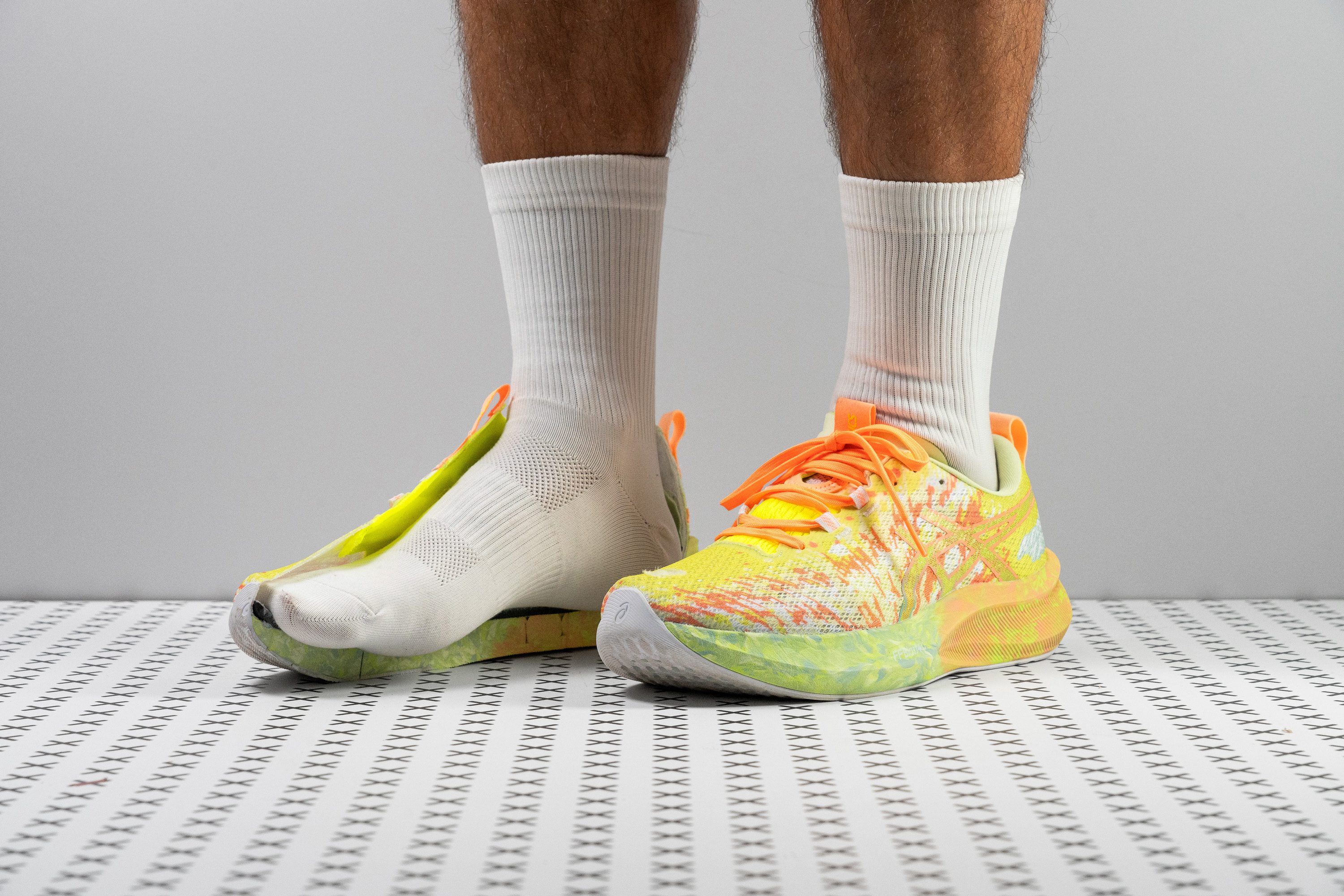





















































What makes it the best?
Think speed and support with an all-natural feel: we have the ASICS Noosa Tri 16. Its weightlessness and responsive cushioning made our runs feel effortless and even graced our strides with subtle stability. Our lab reveals its impressive flexibility, making it our ultimate non-plated 5K and 10K running shoe.
Noosa Tri 16 shows that speed and comfort can go together. Its 7.7 oz (217g) build is at par with our lab-tested racers and is 18.1% lighter than the average running shoe. Its airy feel is heightened by its fluid midsole. It emerged 27.9% more flexible than average in our bend test, boosting its agile and effortless feel.
The FF Blast+ foam is pure joy, delivering both impact protection and energy return. Our durometer shows it’s 12.9% softer than average, which feels great from recovery days to race pace. Amazingly, the ride feels stable too. Diving deeper in the lab reveals it has the 3D Guidance System, which includes midsole sidewalls and sole flares for subtle support.
The upper ticks the boxes in terms of breathability. However, it suffered in our Dremel test so we can’t recommend this pair to runners searching for more durable toe boxes.
Pros
- Lightweight
- Exceptional grip
- Attention-grabbing aesthetic
- Gusseted tongue
- Comfortable upper
- Great for triathlon
- Really versatile
- Fantastic price point
- Breathability
Cons
- Upper longevity
- Minimal tongue padding
- Still not enough energy return
Running shoes for 5K and 10K with the best traction
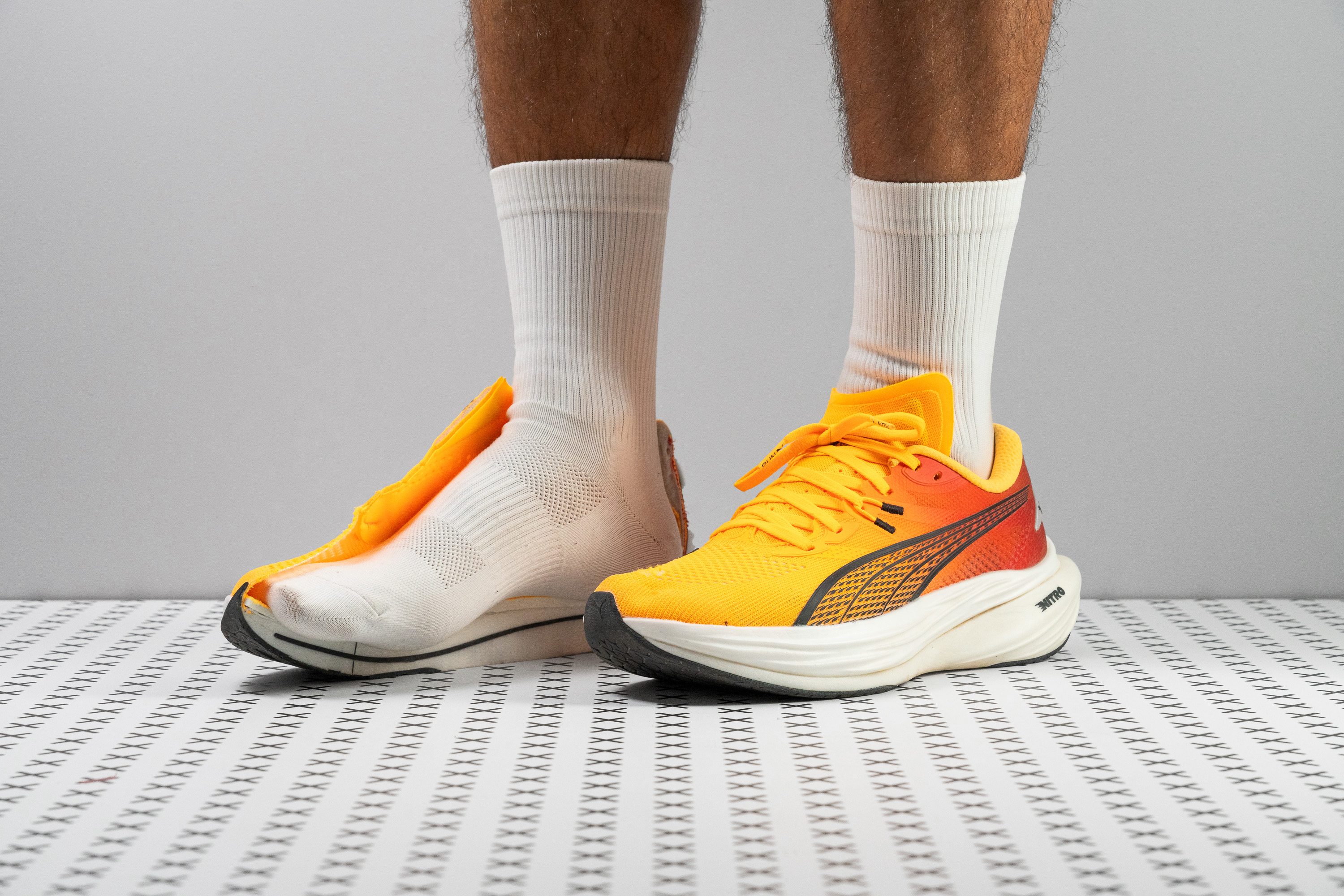

























































What makes it the best?
With traction that feels almost magnetic on any surface we run in, it’s easy to crown the PUMA Deviate Nitro 3 as the 5K and 10K running shoe with the best grip. Tackling turns while sprinting is a breeze not only with DN3’s traction but also its stiff PWRPLATE and responsive cushioning. Our lab agrees it’s an exceptional all-rounder!
A standout feature is the PUMAGRIP ATR outsole, which emerged with a low 72.0 HC durometer measurement, 10.0% softer than average. This figure suggests reliable traction and stability in challenging conditions—exactly what we experienced as we ran through wet roads and even light trails.
DN3 satisfies our thirst for speed by using the PWRPLATE to propel us forward. It emerged 24.0% stiffer than average in our bend test, translating to a highly responsive and energetic ride. The midsole offers a springy sensation too that makes the ride smooth and enjoyable. Our cut-in-half midsole reveals a dual-foam set-up: a bouncy 19.0 HA top layer and an even softer 18.0 HA base layer for lower ground impact. DN3 proves comfort doesn’t have to be sacrificed for speed.
However, the shoe’s 9.5 oz (268g) weight may feel too bulky for racing. We find that DN3 fits the role of a supertrainer rather than a record-breaker.
Pros
- Exceptional grip on all surfaces
- Competitively priced
- Responsive carbon plate
- Adapts well to all paces
- Enhanced knit upper
- Ideal for tempo workouts
- Great at navigating tight turns
Cons
- Needs better energy return
- Minor increase in weight
- Ventilation could be better
- Narrow toebox
When we say “5k or 10k running shoes,” we don’t mean shoes that are good for daily training in preparation for a 5k/10k race. We mean shoes that are great for doing a 5k/10k race in!
3 determining factors for 5k/10k running shoes
Based on our extensive experience, we use these 3 conditions to filter 5k and 10k running shoes:
- The shoe has to be a speed/tempo shoe or a race shoe. Daily trainers are excluded
- The shoe can weigh max 230g
- The shoe has a minimum of 25mm at the heel
Now, these are just determining factors. We cover the nuances below.
What to expect from 5K/10K running shoes
A good 5k/10k running shoe is:
- Very responsive and soft! The foam can not be dull and boring. We need tempo, we need speed!
- Lightweight or even featherlight. On the paper (shoe box), on our scale, and on the legs!
- Very cushioned. We don’t recommend running in minimalist or barefoot running shoes unless you are very familiar with them, and have the experience and knowledge about what happens when you run in such shoes.
- Unfortunately, quite expensive in most cases.
- Unfortunately, not as durable as an average daily trainer.

Responsiveness is all about the foam
Even before we started testing the energy return, we knew how certain foams performed and felt. We have extensive experience with foams and we did the research (please read our ultimate guide on foams if in doubt).
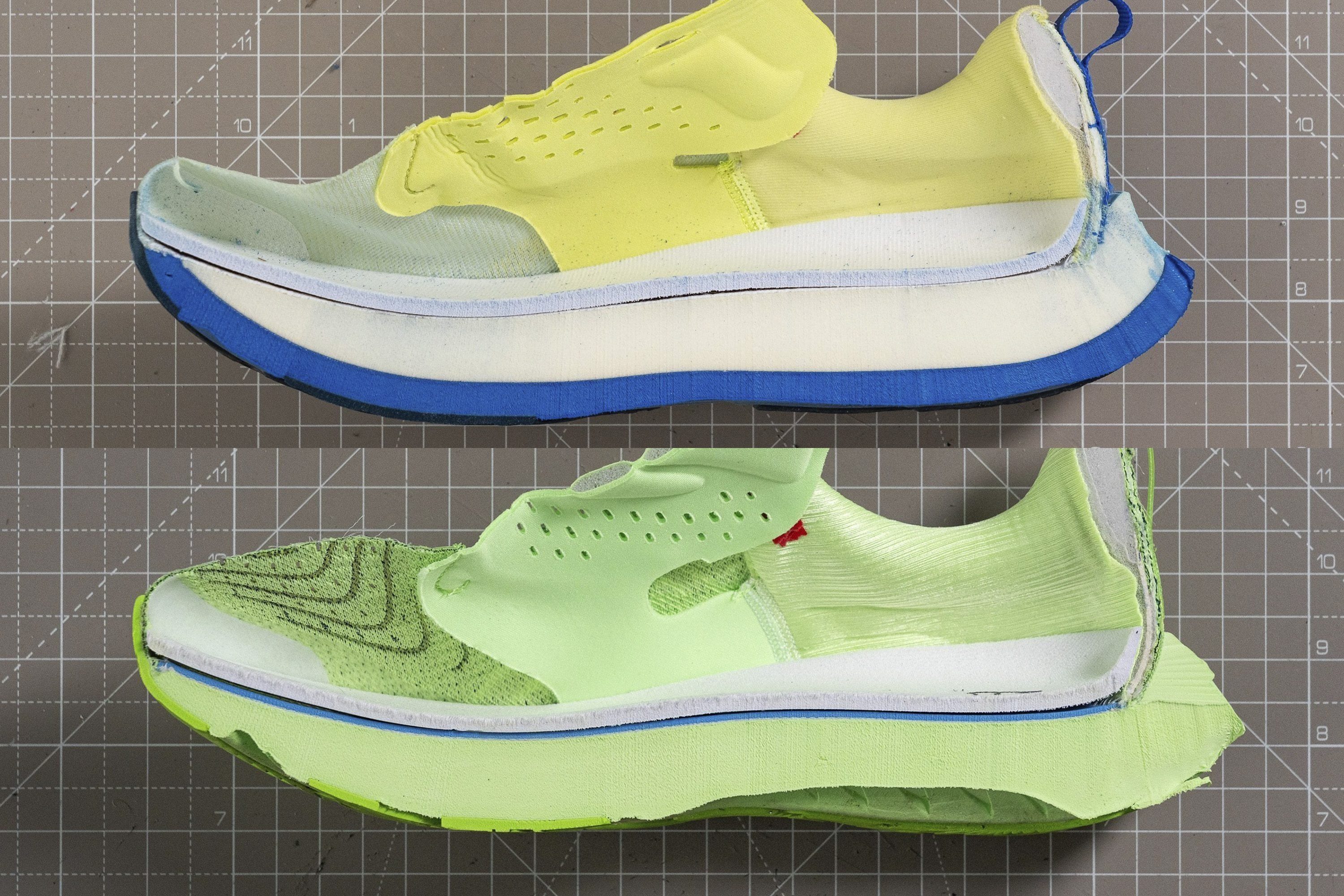
Everything became much easier once we bought the machine that allows us to test energy return (and shock absorption), honoring the golden standard, the ASTM F1976 13 methodology.
Measuring the energy return and shock absorption of 5k/10k running shoes
Energy return, responsiveness, or bounciness, tells us how capable the shoe is of propelling the runner forward. Of course, it's only one part of the story, where other factors like the runner's weight, footstrike, shoe's stiffness, and overall design, also play a role. But, knowing energy return is very valuable and, of course, the higher it is, the better.
Softness and shock absorption of 5K/10K running shoes
Excellent race shoes are usually very soft and very stiff! Not to mention when combined with a carbon-fiber plate. These features are something we measure in our lab.

We use a shore A durometer to measure the foam softness. The lower the rating on our durometer, the softer the shoe. We do it on shoes cut in half, of course, as that’s the only proper way to do it. However, softness does not tell us the whole story. What we recommend looking at is shock absorption as well! It tells us how good the midsole is at dampening the impact at the landing. This is a high priority in racing because you want the shoe to absorb as much of the impact as possible so that your joints and muscles don't have to deal with it!
The higher the shock absorption, the better. Of course, it's also important for the midsole to be able to bounce back after it was squished, and this is exactly what energy return test tells us. So, best to look at both values at all times.
Stiffness of running shoes for 5K/10K
Race and tempo shoes are, on average, stiffer than daily trainers. Stiffness is especially important when it comes to premium foams, which have to be stiff in order to provide high energy return. That's why we often see carbon-fiber plates inserted into the midsoles.
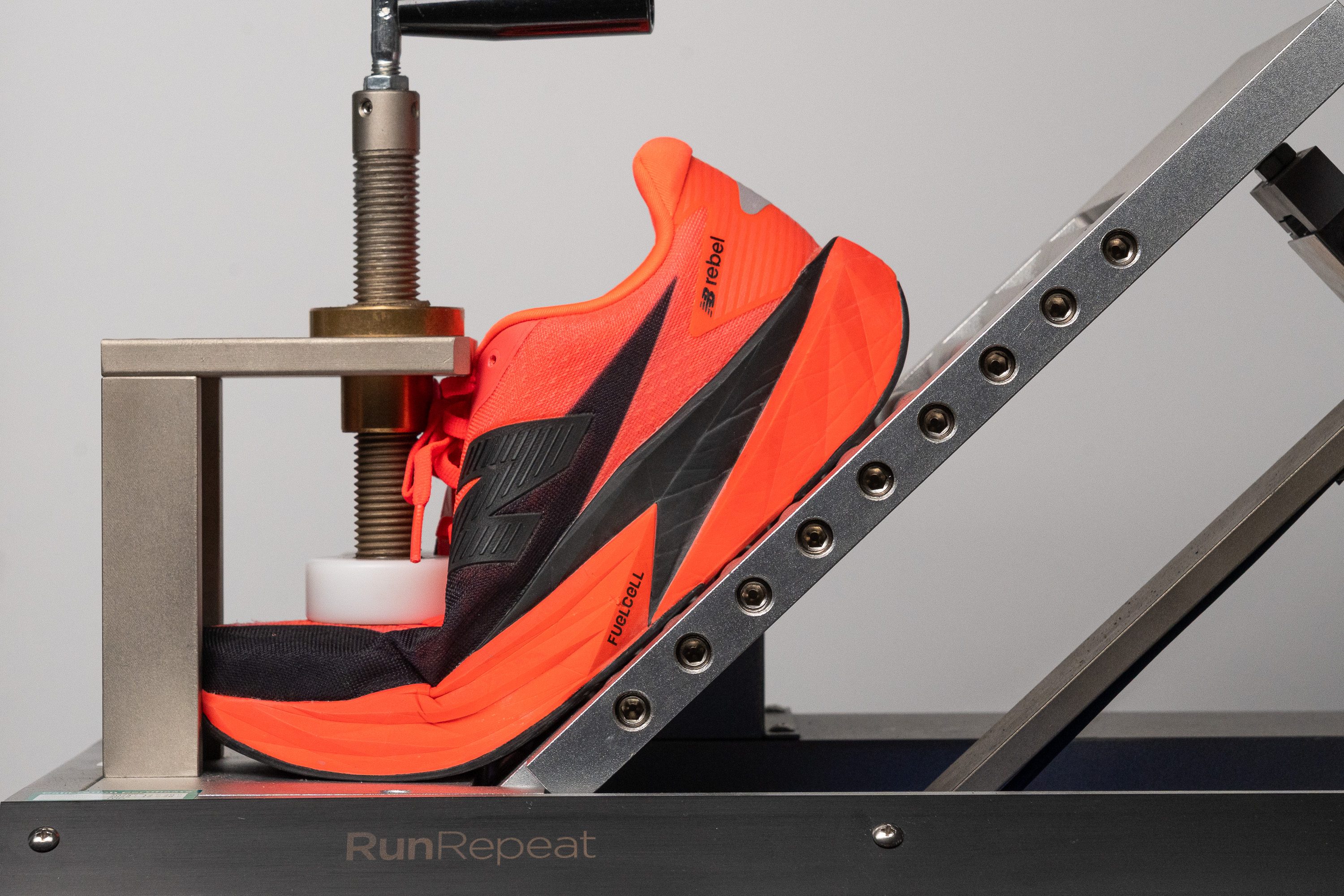
To measure how stiff the shoe is, we clamp its toebox to the surface and then the machine bends the shoe 30 degrees, after adjusting for the rocker. The force needed to do that is the measurement of stiffness, so higher numbers in newtons tell us it’s a stiffer shoe and lower numbers tell us it’s a more flexible shoe.
Avoid minimalist running shoes for 5K/10K races
We suggest this to runners who are not familiar with minimalist shoes, have never ran in them or at least not enough to do a race in them, and who don’t understand which leg and feet muscles with be utilized in such shoes.
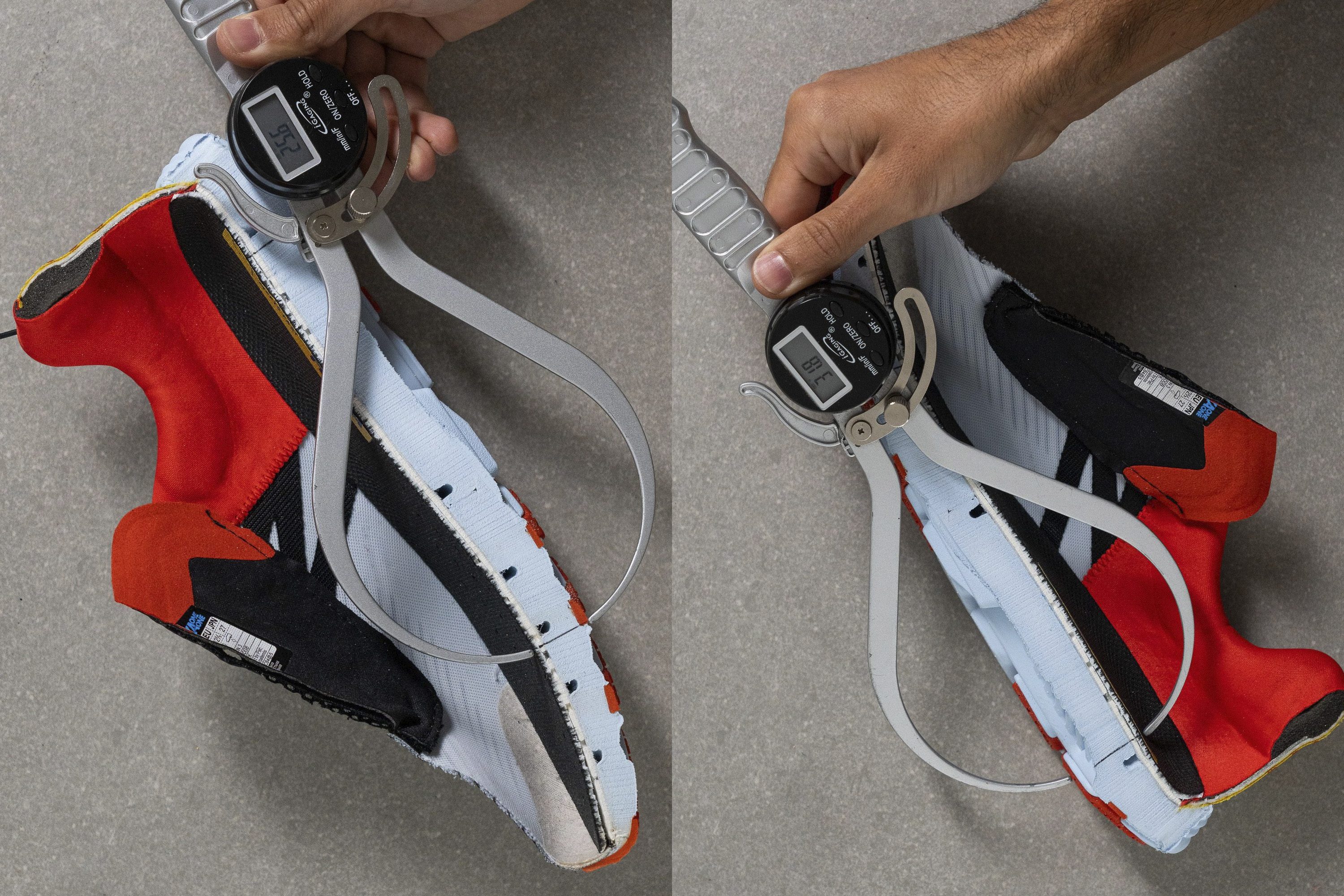
So, our recommendation is to look for at least 25mm of heel stack height if looking for a 5K/10K race shoe. Fortunately, we measure both stack heights in our lab, and we do it according to the WorldAtheltics guidelines so they are as accurate as possible.
Don’t wobble, land safely in 5K/10K running shoes
Because we prefer running in cushioned running shoes, they can get quite tall and quite unstable. This depends on the width of the platform; the wider they are, the more stable the ride!
Shoes that are especially unstable, next to being tall and narrow, are those with very soft foams and no rubber at the heel (and yet someone lands on the heel).

If you’re worried about cornering at fast paces or simply want a planted feel, look for wide platforms.
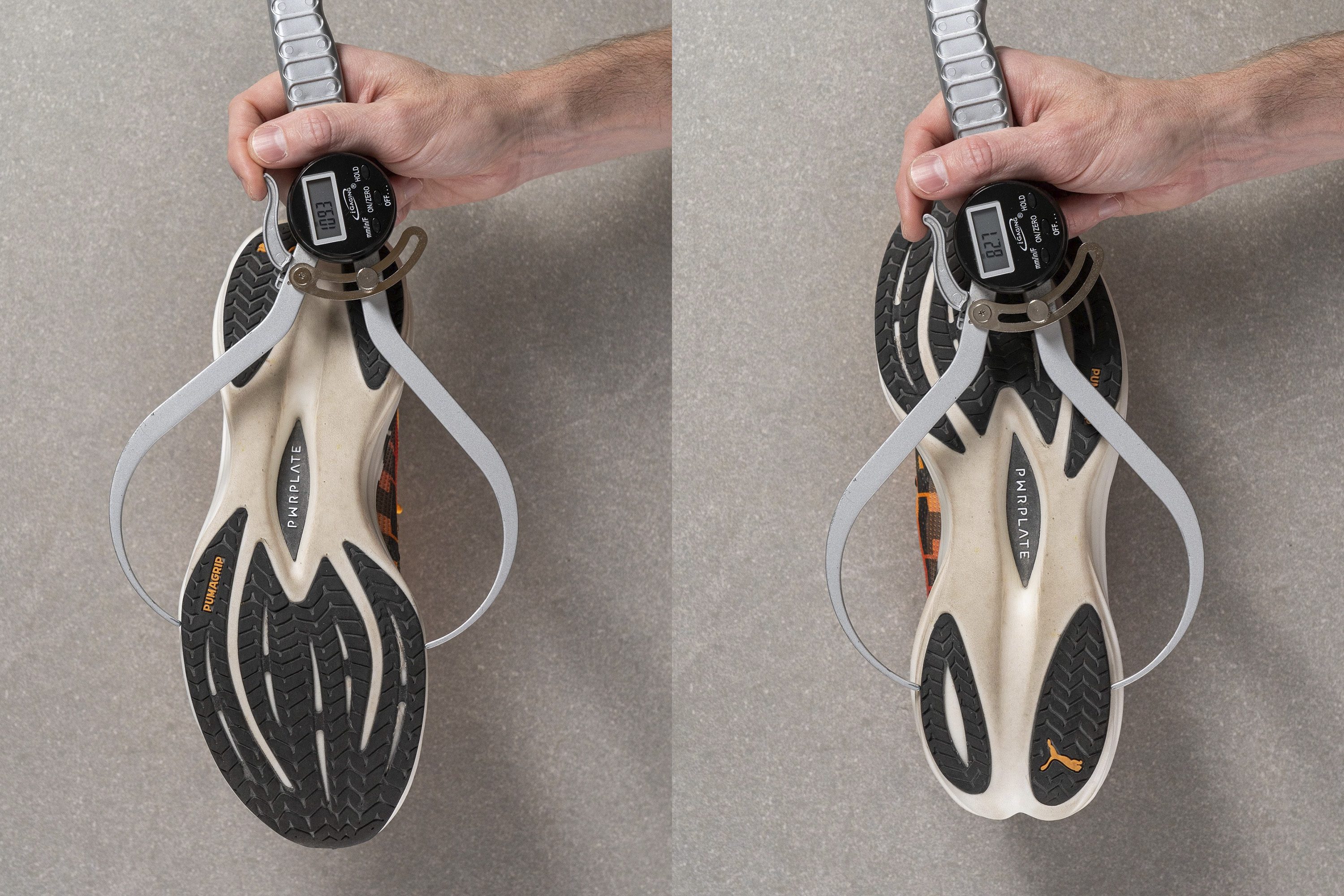
Lightweight feel is a must
Given that we don’t want the shoes to weigh us down or cause premature fatigue, we prioritize lightweight shoes! Our criteria for 5K/10K race shoes is a maximum weight of 8.1 oz or 230g.
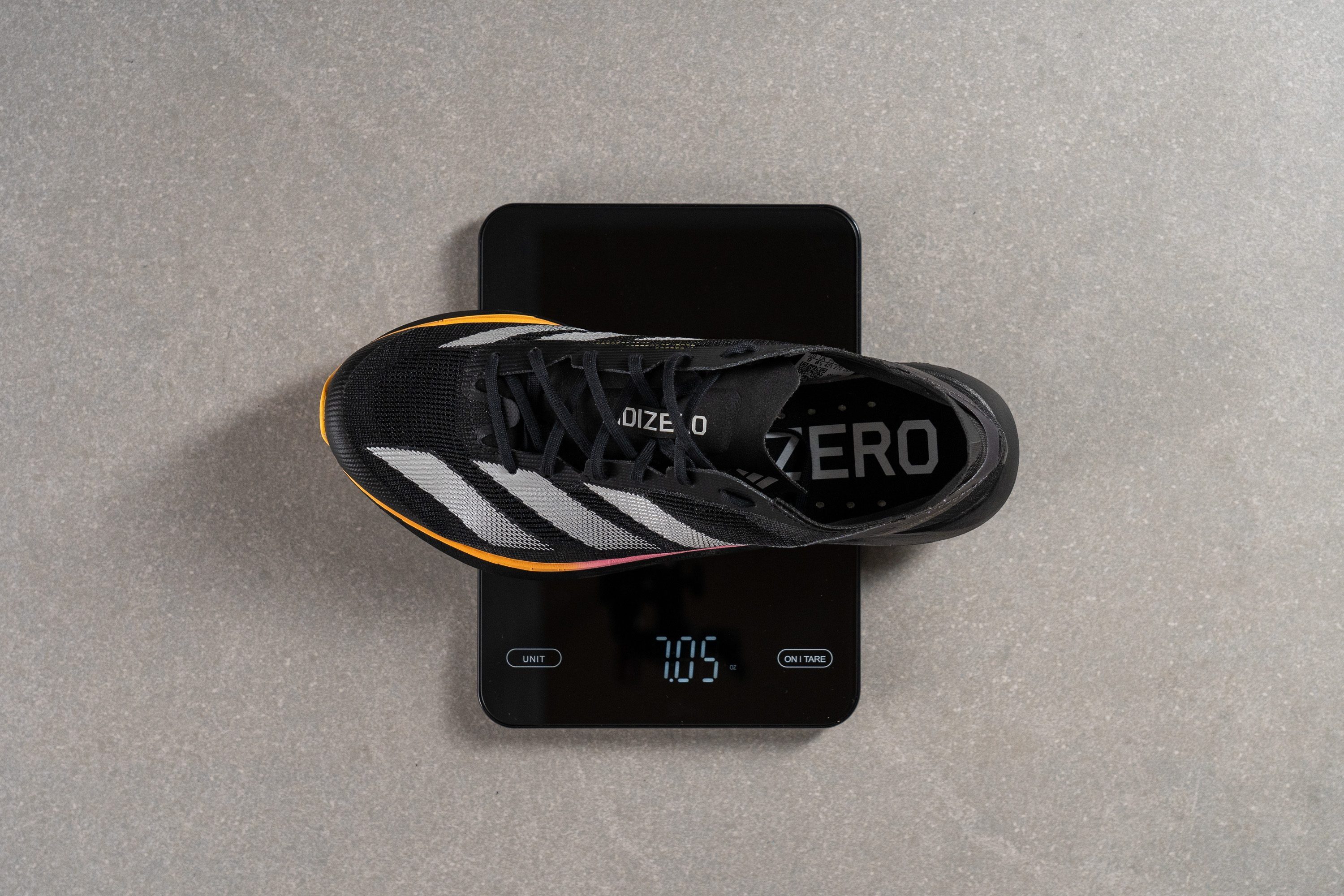
Don’t be surprised by the ways brands are going around when it comes to cutting weight. Often we see chunks of the midsole taken out to reduce the weight, less rubber on the outsole - both in terms of the thickness and surface, less or no padding on the tongue or heel collar, no pull tabs, and so on.
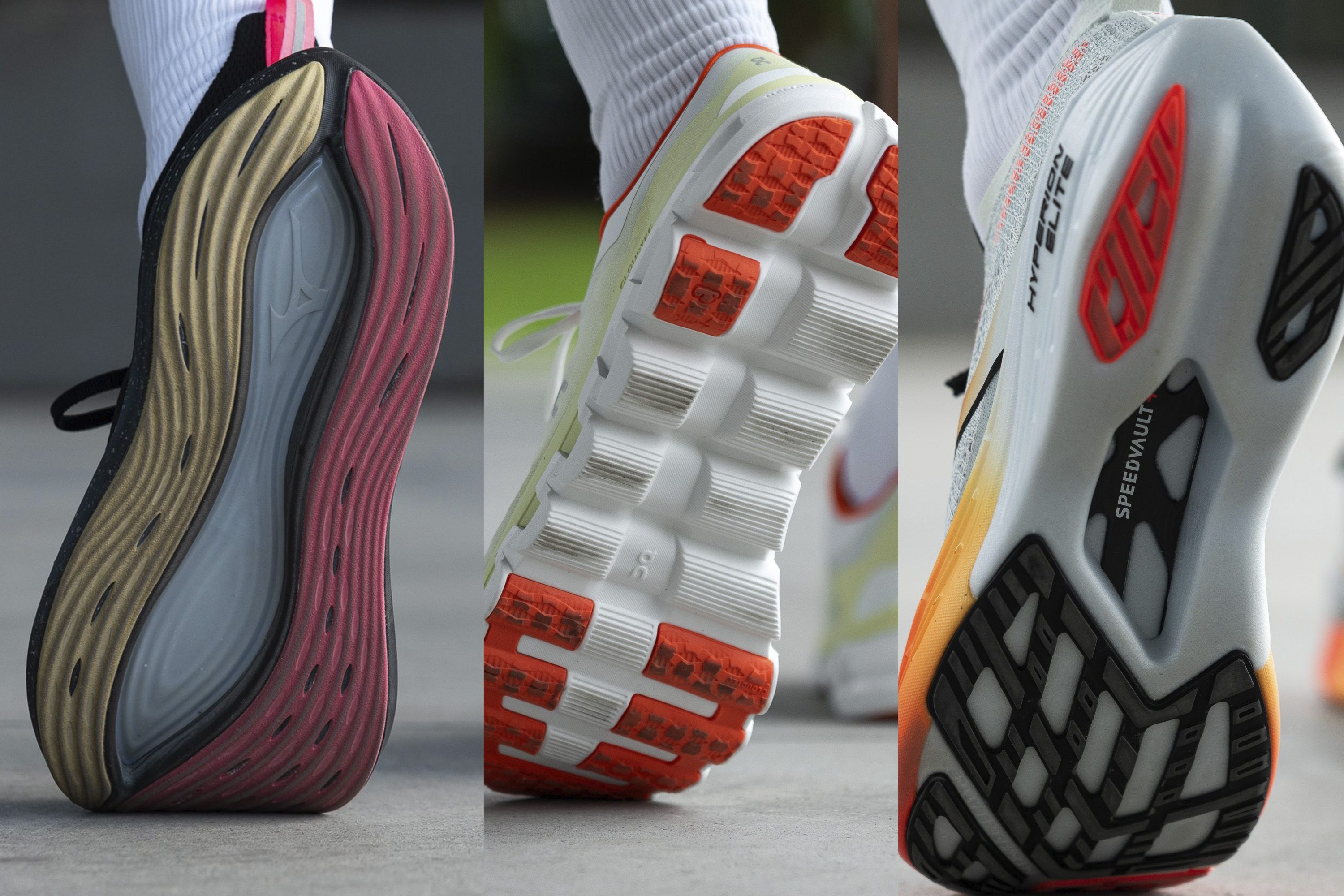


Airy upper is the best in 5K/10K running shoes
It is crucial for your feet to breathe when giving your best on the track/road. Noone wants blisters or anything that comes as a consequence of soaked feet.
Performing a breathability test in RunRepeat lab
We test the breathability of race shoes in our lab by pumping smoke into them and then observing where it comes out, how much of it, and at which pace. Based on this, we assign a breathability rating on a 1-5 scale, where 5 is the most breathable.
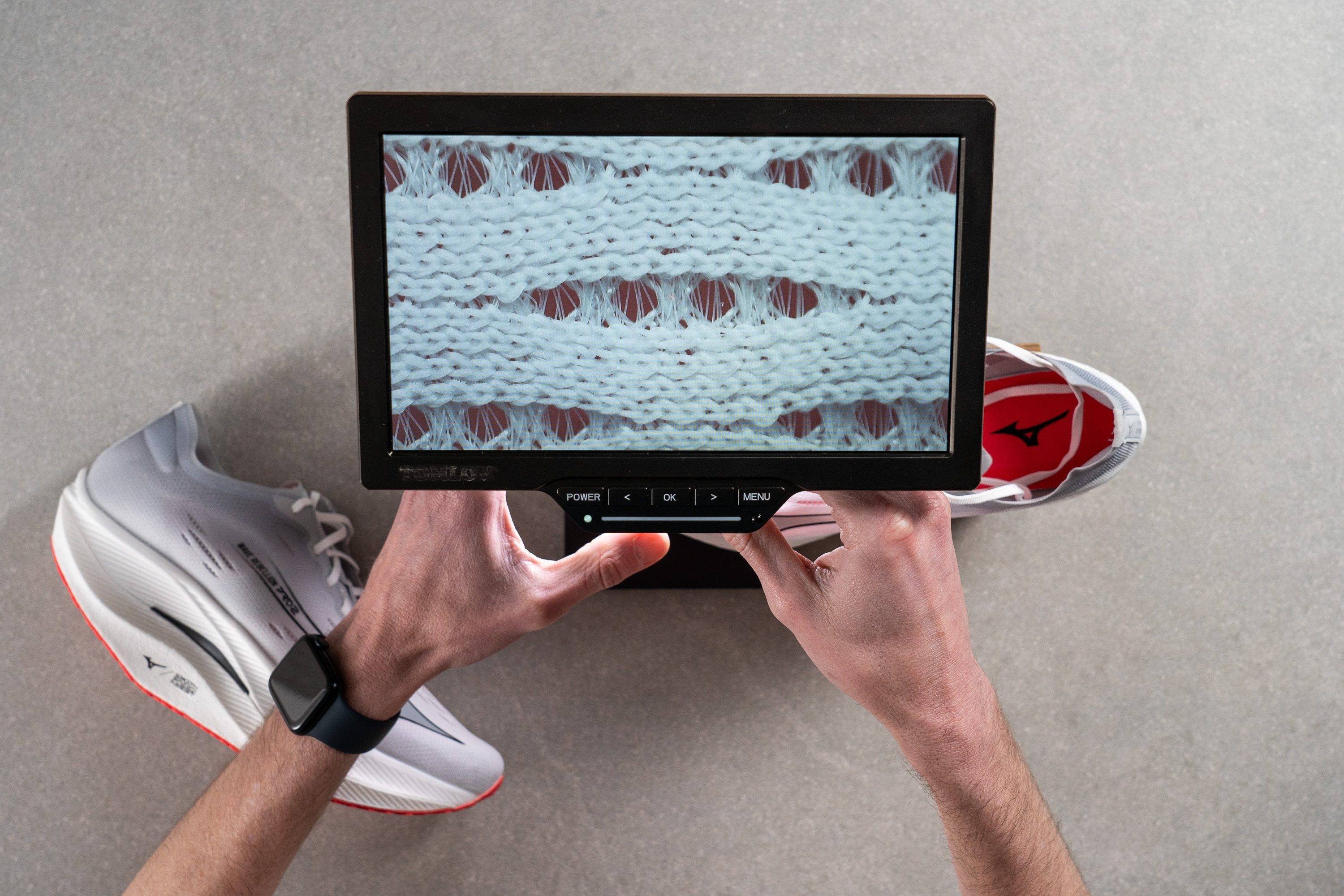
Then we also look at the uppers under the microscope. This gives us in-depth knowledge of why certain shoes breathe more or less and where the layers are doubled or whether some ventilation holes are for show only.
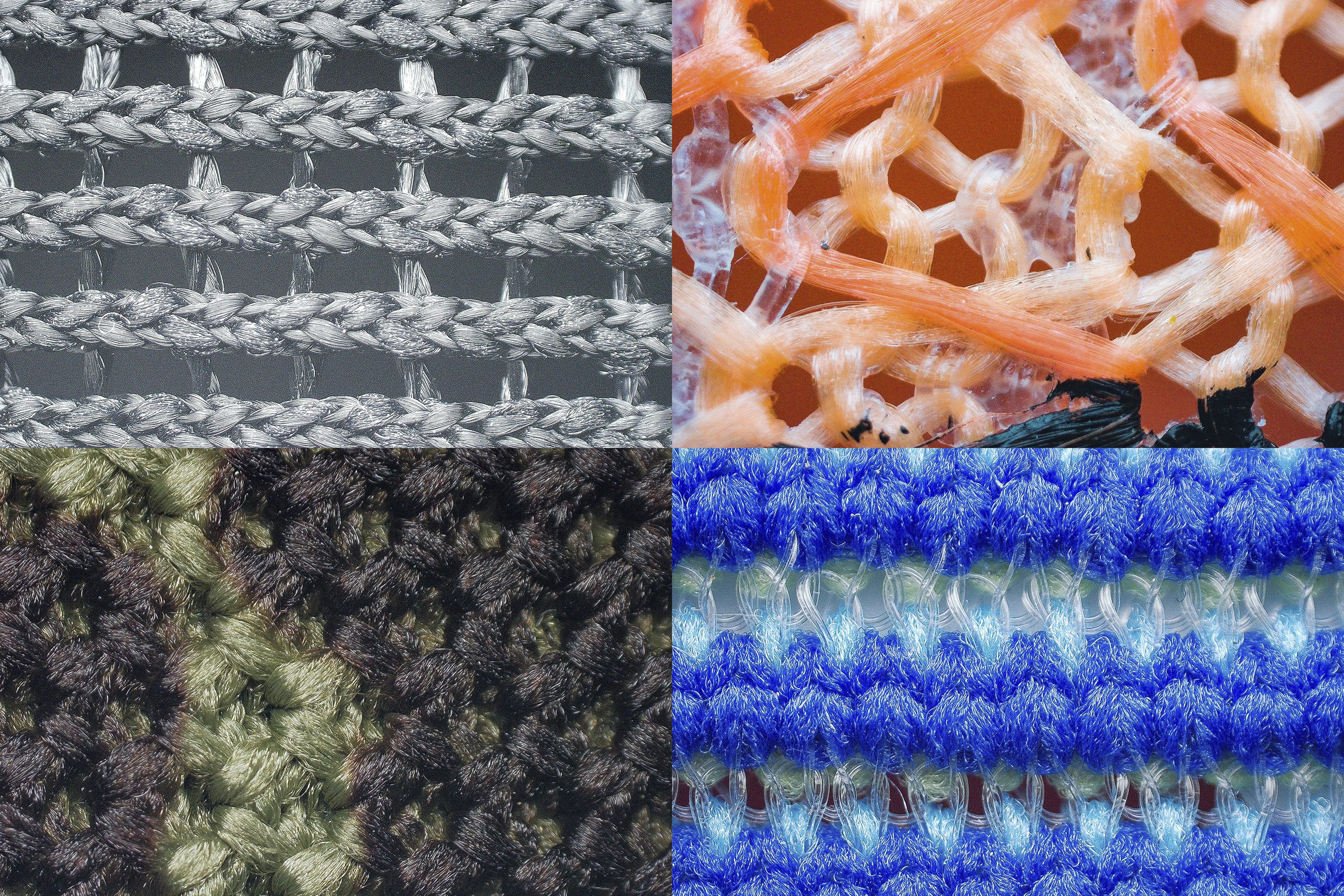
Rocker geometry: yes or no?
A few years back, we’d have written, “rocker is all the craze” but here we are today when so many shoes are rockered it’s almost expected (a given).

In the lab, we’re able to analyze how ‘harsh’ the rocker is, and we also feel that on our runs. However, it’s important to know whether this technology can do you any good.
Rockered shoes could work great for you if you can’t extend your big toe (point upwards without lifting other toes), if you’re experiencing calf or hamstring discomfort, or if your toes/heels hurt. Rocker could be a bad idea if you have hip/knee issues or ITBS.
|
If you want to learn more about rockered running shoes, read our in-depth rocker guide. |
Why outsoles matter SO MUCH in 5K and 10K running shoes?
Because they tell us which footstrike the shoes are made for and because if there’s not a lot of rubber, especially where we land, we might experience premature wear and tear!
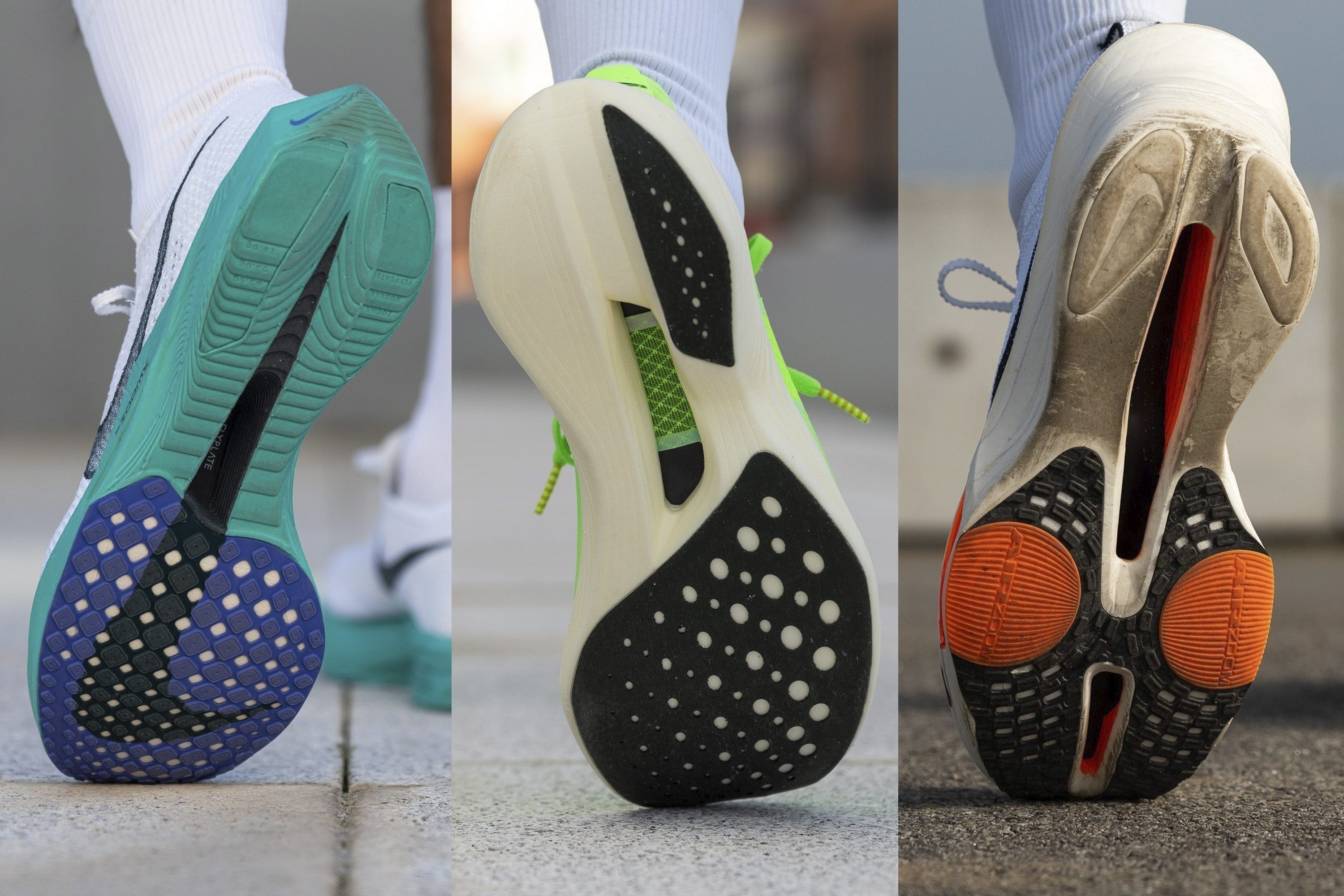
Looking at the images above, we can see that some shoes favor forefoot strikers. This does not mean that you, possibly a heel striker, can’t run in them.
But it does mean that, when you land on the exposed midsole, you might experience: sliding on wet surfaces because the exposed midsole does not grip, more wobbling because rubber is not giving extra support to that midsole part, and a destroyed shoe sooner rather than later because nothing is protecting that exposed midsole!

Traction in 5K/10K running shoes
If you plan to run in wet weather, it's important to consider the traction. Fortunatelly, this is another thing we test in our lab and, as always, it's a standardized test. We honor the SATRA TM144 methodology.
Testing the traction of 5K/10K running shoes in RunRepeat lab
The result of this test is a dynamic coefficient of friction, dCoF or CoF. The higher it is, the better, and if you often run in wet weather, we recommend looking for a CoF of at least 0.45.
Can you run a (half) marathon in 5K/10K race shoes?
Sure! We would suggest, however, looking for a bit more stack height at the heel (from 25mm to a minimum of 30mm) as it’s a prolonged effort and you will appreciate more cushioning underneath.

